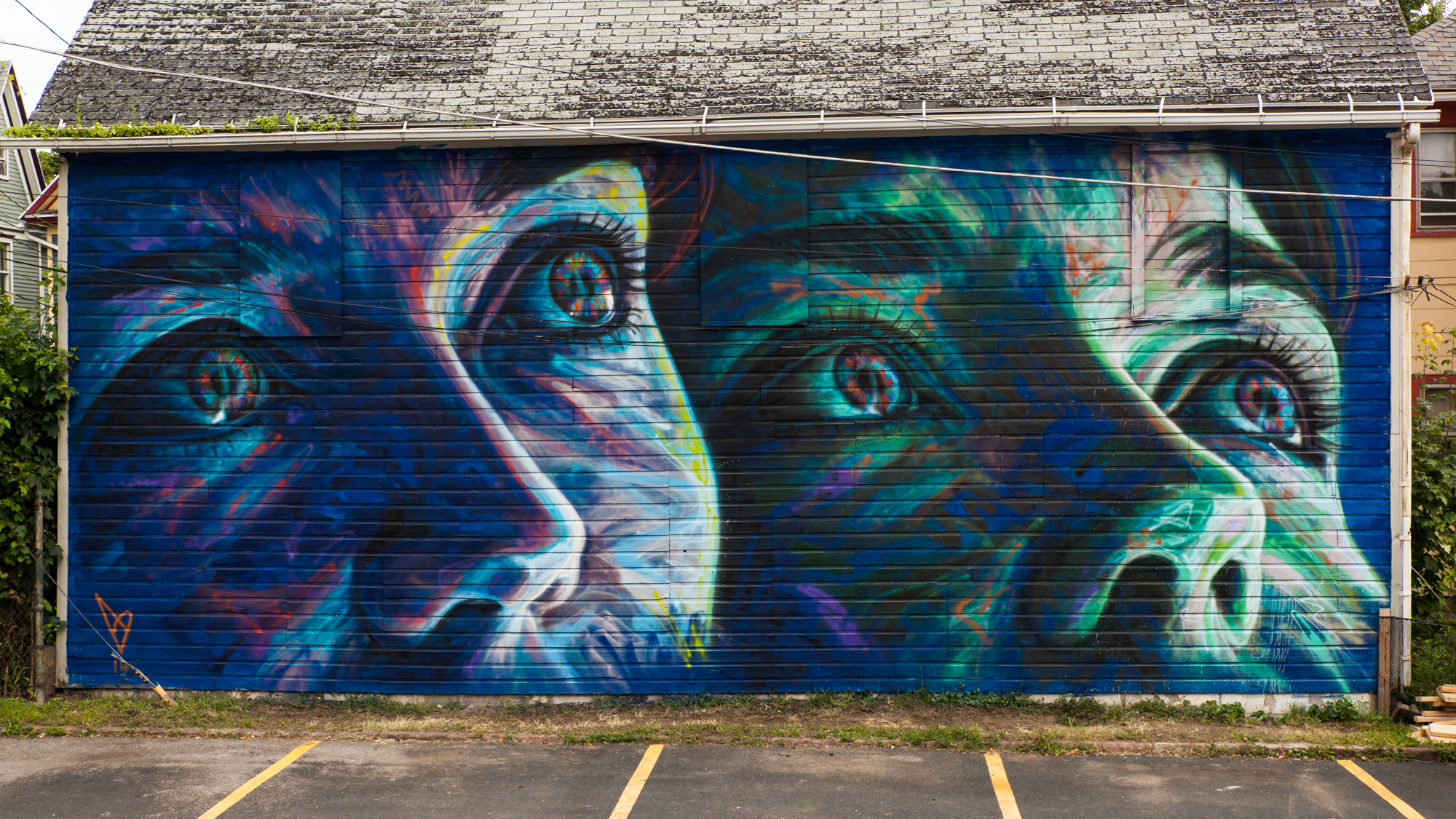Today, a person’s zip code is a better indication of their health than their genetic code is. We know that physical communities experience shared sickness, whether linked to trauma, viruses or unavailable nutrition, and there are established biomedical consequences to poverty and segregation. Acknowledging these links, however, only gets us so far; successful intervention demands thinking deeply about the relationship between patients and their communities. Rochester, NY is home to an innovative attempt to combating these issues. It is one that challenges traditional ideas of what factors define health and consequently, what metrics define therapy.
About two years ago, I began volunteering with a nonprofit in Rochester that organizes WALL\THERAPY, a self-identified “public community-level intervention using street art as a vehicle to address our collective need for inspiration.” It’s a bold claim. WALL\THERAPY brings together internationally recognized and Rochester-based street artists to produce murals across the city. WALL\THERAPY seeks permission from building owners to ensure that the murals will stay up and continue to impact communities. Although the owners cannot directly control what the mural will depict, they have full power to paint over the wall if they dislike it. The murals are strategically located either in neighborhoods that are neglected by much of the city or in pockets of low prosperity — often, these criteria overlap. WALL\THERAPY has received substantial attention from both local and global media sources: the project now has followers in 2000 cities in over 104 countries and has made considerable waves in the street art community. At its most essential, it hopes to use imagery to improve Rochesterian health by enhancing its environment.
For context, the community health of Rochester, NY has ample room for improvement. A 2013 report found that Rochester was the 5th poorest among the nation’s 75 metro areas. Worse, it is deeply segregated along ethnic and socioeconomic lines. Fittingly, statistics within the city are truly horrifying — a 2012 survey on Rochester City School District students under eighteen identified that 14 percent of students had carried a weapon in the past 30 days, and 8 percent of students had been forced to have involuntary sexual intercourse. It was these alarming statistics of youth-on-youth violence that inspired Dr. Ian J. Wilson, an interventional radiologist, to found WALL\THERAPY. A former graffiti artist and graduate of the University of Rochester School of Medicine, Dr. Wilson was inspired by the imagery he saw on a daily basis as a child: “The handball courts were painted … so seeing those … in a pretty rough and dodgy neighborhood, released me to somewhere else … aside from the immediate environment I was in. So I thought, if that worked then, for me, it could perhaps work here, in Rochester.”
Of course, art resonates with more people than those who live and work in “rough” neighborhoods. Thievin’ Stephen, a Rochester-based artist who has contributed murals to WALL\THERAPY, explains that public art serves a number of purposes.
“You know, artwork isn’t just instead of a blank wall. It’s ultimately instead of yet another advertisement, another ad in our life, another billboard, another ‘buy this, buy this, buy this,’ whether you are going to benefit from it or not. Whether it’s going to be detrimental to your health or not … And so I think it’s important to have a balance and to realize that a little break from that constant bombardment is good for people. It inspires people. The way to look at it is not, well, okay, we have whatever number — we have 40 murals in the city, that’s enough. The way to look at it is, we still have 960 murals less than we have billboards. So we’re not anywhere close to being done. The imagery around us and the world we live in really impacts people’s moods, people’s wellbeing, people’s outlooks.”
Locals who I spoke to largely agreed. Only a few were indifferent, and everyone supported the initiative as a whole. Several described the murals as uplifting, and found it particularly exciting that strangers were traveling to the murals: areas that were previously avoided for being “dangerous” suddenly had a series of hip, new attractions. The murals proved to be an organic way to desegregate the city, bring new customers to small businesses, create dialogue, encourage residents from different areas to take pride in their neighborhoods and rediscover the city. For example, the Conkey Cruisers, a grassroots program that promotes bicycling to improve health, has taken groups of youth and adolescents on mural tours around the city. Neighborhood business associations have organized to donate the cost of paint and equipment for murals in their communities and others, choosing to recognize and tangibly invest in WALL\THERAPY. These benefits represent ways the city has come together. No one would call WALL\THERAPY a panacea, but it does seem to be one successful way to mobilize once-stagnant neighborhoods and foster stewardship.
Overwhelming support that Rochester has shown for WALL\THERAPY indicates that it’s a well received program that works toward these problems, albeit indirectly. When we try to answer questions about the capacity of art as preventive medicine (or about public health interests against broader interests of a community), we struggle to balance mapping out health’s complex multifactoriality and casting too wide a net. While a community’s morale and its health are not interchangeable, they are intimately intertwined.
Image source: mural by David Walker for WALL/THERAPY in New York from 2014.



